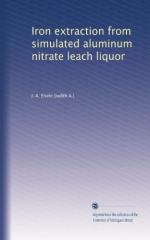|
This section contains 276 words (approx. 1 page at 300 words per page) |
The oxides and hydroxides of ferric iron (Fe(III)) are very important minerals in many soils, and are important suspended solids in some fresh water systems. Important oxides and hydroxides of iron include goethite, hematite, lepidocrocite, and ferrihydrite.
These minerals tend to be very finely divided and can be found in the clay-sized fraction of soils, and like other clay-sized minerals, are important adsorbers of ions. At high pH they adsorb hydroxide (OH-) ions creating negatively charged surfaces that contribute to cation exchange surfaces. At low pH they adsorb hydrogen (H+) ions, creating anion exchange surfaces. In the pH range between 8 and 9 the surfaces have little or no charge. Iron hydroxide and oxide surfaces strongly adsorb some environmentally important anions, such as phosphate, arsenate and selanite, and cations like copper, lead, manganese and chromium. These ions are not exchangeable, and in environments where iron oxides and hydroxides are abundant, surface adsorption can control the mobility of these strongly adsorbed ions.
The hydroxides and oxides of iron are found in the greatest abundance in older highly weathered landscapes. These minerals are very insoluble and during soil weathering they form from the iron that is released from the structure of the soil-forming minerals. Thus, iron oxide and hydroxide minerals tend to be most abundant in old landscapes that have not been affected by glaciation, and in landscapes where the rainfall is high and the rate of soil mineral weathering is high. These minerals give the characteristic red (hematite or ferrihydrite) or yellow-brown (goethite) colors to soils that are common in the tropics and subtropics.
See Also
Arsenic; Erosion; Ion Exchange; Phosphorus; Soil Profile; Soil Texture
|
This section contains 276 words (approx. 1 page at 300 words per page) |


